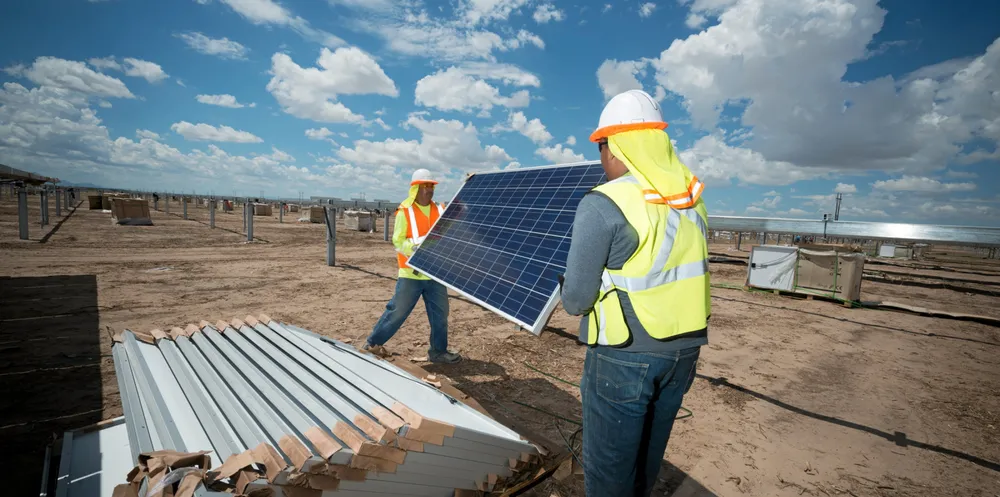Days in the sun: US solar industry 'roars back' with record install in 2020
New-best 19.2GW of PV wired in over last year, a 43% growth on 2019, according to new Solar Energy Industries Association figures

Green is the new black. Subscribe to Accelerate
Get the market insight you need into the global oil & gas industry's energy transition – from the new newsletter from Upstream and Recharge. Sign up here
New capacity last year easily surpassed the previous 15.1GW national record in 2016, driven by historic levels of activity in utility-scale and residential.
“After a slowdown in Q2 due to the pandemic, the solar industry innovated and came roaring back to continue our trajectory as America’s leading source of new energy,” said Abigail Ross Hopper, CEO of the industry lobbyist the US' Solar Energy Industries Association (SEIA), which published the report with Wood Mackenzie Power & Renewables.
Utility-scale installations came in at just under 14GW versus 8.4GW in 2019 but the additions were less than expected as developers pushed some projects into this year under tax equity financing pressures.
Residential deployment was up 11% to 3.1GW from 2019, also less than expected as installations were significantly impacted by the pandemic in the first half of last year.
Non-residential PV was impacted more by Covid-19 than any solar sector as developers reported delays related to permitting and interconnection and with approval processes at the municipal or county levels. New non-residential capacity fell 4% to 2.07GW versus 2019.
Solar in 2020 increased its share of US electricity-generation additions to an all-time high 43% from 40% the previous year and 25% in 2018. Wind was second (38%), then natural gas (18%) and other technologies (1%).
California, the largest state solar market, was again the leader in 2020 new capacity with 3.9GW, followed by Texas (3.4GW), Florida (2.8GW), Virginia (1.4GW) and North Carolina (785MW).
The report said last December’s two-year extension of the federal investment tax credit (ITC) for solar at 26% value of a project’s capital investment was “welcome news” and will help underpin solid industry growth through 2025.
In 2023, the ITC will step down to 22% for projects that begin construction that year. They must enter commercial operation by the end of 2025. Only utility-scale projects that come online after then will be eligible for the ITC at 10% value.
In the next five years, the utility-scale segment will also benefit from a “proliferation of decarbonisation targets from a variety of off-takers”, the report said. These include federal, state, and municipal governments, companies, and utilities.
There are currently 11.2GW of projects under construction for 2021, putting the market on pace to hit 17.5GW of annual capacity additions.
“There is considerable upside opportunity during this time. President Biden re-joined the Paris Climate Accord in February, which has already driven a handful of power offtakers to revisit and possibly increase their renewable energy procurement targets,” according to the report.
Elsewhere, the outlook is also bright for residential solar as sales continue to surpass expectations as loan providers roll out attractive products, interest in home improvement surges, and customers suffering through power outages from extreme weather events seek energy resilience, according to the report.
Despite significant opportunity, the industry also faces some headwinds and downside risks. Developers continue to report tighter access to tax equity financing, especially for new entrants. While there has been some growth in the number of tax equity providers, new entrants are often unable to close deals as fast as incumbent financiers, leading to financing delays.
Another challenge facing new or less established developers is securing engineering, procurement, and construction firms. There is also growing concern here about imports of solar products made with polysilicon from Xinjiang province, China, amid reports of forced labour in the region and an inability to conduct independent audits.
“While there is still uncertainty around the extent of the impact to the US solar market, the situation has the potential to delay some portion of US projects,” according to SEIA and WoodMac.
(Copyright)